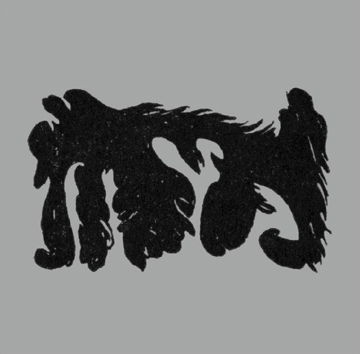 If anyone could make something as dry and academic as Musique Concrêteinto intense, ferociously sexy ear candy, it would have to be PeterCristopherson and John Balance. This release is the duo's contributionto Beta-Lactam Ring Records' terrific Lactamase series: a subscriptionseries of twelve 10" vinyl records by some of today's best andbrightest underground, avant-garde and esoteric musical projects. Theseries has included some amazing releases from Edward Ka-Spel, Volcanothe Bear and Tony Conrad, but the most highly anticipated release iscertainly Coil's masterful grand finale to the series. Coil's two-sided10" occupies a unique place in their discography. It is a trulyawe-inspiring tangent into the rarefied realm of musique concrêteabstractionists such as Iannis Xenakis, Tod Dockstader and Luc Ferrari.There has always been an element of these musical progenitors in Coil'smusick, but their penchant for structured, vocal-driven "songs" haveprevented them from ever fully engaging their abstruse tendencies. Bothsides of the 10" use the same basic sounds and techniques, but thesculpturing takes different forms on either side. Side A, or "TheRestitution of Decayed Intelligence I," introduces the sound palette: achorus of digital buzzes, stutters and skips that occupy the soundfieldat different pitches and volumes. This music is very dimensional,seeming to fly into one's ears at a myriad of different angles. Soon,the high-end stutters are joined by a series of quasi-rhythmic metallicthrobs, like the alternating whirr of a flying saucer engine. Theseelements are then edited, overdubbed and sculpted into dramaticconvergences of sound that alternately pierce, arouse and frighten. Somany faintly recognizable sounds can be heard in this midst of theseabstractions, but the listener cannot discern which are placed thereintentionally and which are an accident of subjectivity. A chorus ofbone saws, a squeaking hinge, high-pitched shrieking, a mutated voice,swooping metallic shards, granular static: all of these sounds sneakout of the noise over the course of the piece. Side B, or "TheRestitution of Decayed Intelligence II," uses the same set of auralphenomena, but this time snatches of recognizable melody become obviousas the piece unfolds. Jhon Balance's warped vocal hiccups from tracktwo of The Remote Viewer are re-used, albeit in a completelyinscrutable form, sounding like a swarm of bees frantically trying tocommunicate with the human race. Halfway through, there is a shockingincrease in volume and intensity as the piece gains momentum. It ishere that we see Coil's personality come through; this piece, howeverchaotic, has the same epic sweep as their Love's Secret Domain-era acidhouse excercises, and all of the dark, hedonistic atmosphere. This 10"manages to be both a brilliantly mature dip into abstract electronicmusic, and twisted, uber-Pagan ritual musick. After more than 20 years,Coil is still perfectly balancing this strange dichotomy and creatingsomething wholly unexpected and wonderful with each new release. -
If anyone could make something as dry and academic as Musique Concrêteinto intense, ferociously sexy ear candy, it would have to be PeterCristopherson and John Balance. This release is the duo's contributionto Beta-Lactam Ring Records' terrific Lactamase series: a subscriptionseries of twelve 10" vinyl records by some of today's best andbrightest underground, avant-garde and esoteric musical projects. Theseries has included some amazing releases from Edward Ka-Spel, Volcanothe Bear and Tony Conrad, but the most highly anticipated release iscertainly Coil's masterful grand finale to the series. Coil's two-sided10" occupies a unique place in their discography. It is a trulyawe-inspiring tangent into the rarefied realm of musique concrêteabstractionists such as Iannis Xenakis, Tod Dockstader and Luc Ferrari.There has always been an element of these musical progenitors in Coil'smusick, but their penchant for structured, vocal-driven "songs" haveprevented them from ever fully engaging their abstruse tendencies. Bothsides of the 10" use the same basic sounds and techniques, but thesculpturing takes different forms on either side. Side A, or "TheRestitution of Decayed Intelligence I," introduces the sound palette: achorus of digital buzzes, stutters and skips that occupy the soundfieldat different pitches and volumes. This music is very dimensional,seeming to fly into one's ears at a myriad of different angles. Soon,the high-end stutters are joined by a series of quasi-rhythmic metallicthrobs, like the alternating whirr of a flying saucer engine. Theseelements are then edited, overdubbed and sculpted into dramaticconvergences of sound that alternately pierce, arouse and frighten. Somany faintly recognizable sounds can be heard in this midst of theseabstractions, but the listener cannot discern which are placed thereintentionally and which are an accident of subjectivity. A chorus ofbone saws, a squeaking hinge, high-pitched shrieking, a mutated voice,swooping metallic shards, granular static: all of these sounds sneakout of the noise over the course of the piece. Side B, or "TheRestitution of Decayed Intelligence II," uses the same set of auralphenomena, but this time snatches of recognizable melody become obviousas the piece unfolds. Jhon Balance's warped vocal hiccups from tracktwo of The Remote Viewer are re-used, albeit in a completelyinscrutable form, sounding like a swarm of bees frantically trying tocommunicate with the human race. Halfway through, there is a shockingincrease in volume and intensity as the piece gains momentum. It ishere that we see Coil's personality come through; this piece, howeverchaotic, has the same epic sweep as their Love's Secret Domain-era acidhouse excercises, and all of the dark, hedonistic atmosphere. This 10"manages to be both a brilliantly mature dip into abstract electronicmusic, and twisted, uber-Pagan ritual musick. After more than 20 years,Coil is still perfectly balancing this strange dichotomy and creatingsomething wholly unexpected and wonderful with each new release. - If anyone could make something as dry and academic as Musique Concrêteinto intense, ferociously sexy ear candy, it would have to be PeterCristopherson and John Balance. This release is the duo's contributionto Beta-Lactam Ring Records' terrific Lactamase series: a subscriptionseries of twelve 10" vinyl records by some of today's best andbrightest underground, avant-garde and esoteric musical projects. Theseries has included some amazing releases from Edward Ka-Spel, Volcanothe Bear and Tony Conrad, but the most highly anticipated release iscertainly Coil's masterful grand finale to the series. Coil's two-sided10" occupies a unique place in their discography. It is a trulyawe-inspiring tangent into the rarefied realm of musique concrêteabstractionists such as Iannis Xenakis, Tod Dockstader and Luc Ferrari.There has always been an element of these musical progenitors in Coil'smusick, but their penchant for structured, vocal-driven "songs" haveprevented them from ever fully engaging their abstruse tendencies. Bothsides of the 10" use the same basic sounds and techniques, but thesculpturing takes different forms on either side. Side A, or "TheRestitution of Decayed Intelligence I," introduces the sound palette: achorus of digital buzzes, stutters and skips that occupy the soundfieldat different pitches and volumes. This music is very dimensional,seeming to fly into one's ears at a myriad of different angles. Soon,the high-end stutters are joined by a series of quasi-rhythmic metallicthrobs, like the alternating whirr of a flying saucer engine. Theseelements are then edited, overdubbed and sculpted into dramaticconvergences of sound that alternately pierce, arouse and frighten. Somany faintly recognizable sounds can be heard in this midst of theseabstractions, but the listener cannot discern which are placed thereintentionally and which are an accident of subjectivity. A chorus ofbone saws, a squeaking hinge, high-pitched shrieking, a mutated voice,swooping metallic shards, granular static: all of these sounds sneakout of the noise over the course of the piece. Side B, or "TheRestitution of Decayed Intelligence II," uses the same set of auralphenomena, but this time snatches of recognizable melody become obviousas the piece unfolds. Jhon Balance's warped vocal hiccups from tracktwo of The Remote Viewer are re-used, albeit in a completelyinscrutable form, sounding like a swarm of bees frantically trying tocommunicate with the human race. Halfway through, there is a shockingincrease in volume and intensity as the piece gains momentum. It ishere that we see Coil's personality come through; this piece, howeverchaotic, has the same epic sweep as their Love's Secret Domain-era acidhouse excercises, and all of the dark, hedonistic atmosphere. This 10"manages to be both a brilliantly mature dip into abstract electronicmusic, and twisted, uber-Pagan ritual musick. After more than 20 years,Coil is still perfectly balancing this strange dichotomy and creatingsomething wholly unexpected and wonderful with each new release. -
If anyone could make something as dry and academic as Musique Concrêteinto intense, ferociously sexy ear candy, it would have to be PeterCristopherson and John Balance. This release is the duo's contributionto Beta-Lactam Ring Records' terrific Lactamase series: a subscriptionseries of twelve 10" vinyl records by some of today's best andbrightest underground, avant-garde and esoteric musical projects. Theseries has included some amazing releases from Edward Ka-Spel, Volcanothe Bear and Tony Conrad, but the most highly anticipated release iscertainly Coil's masterful grand finale to the series. Coil's two-sided10" occupies a unique place in their discography. It is a trulyawe-inspiring tangent into the rarefied realm of musique concrêteabstractionists such as Iannis Xenakis, Tod Dockstader and Luc Ferrari.There has always been an element of these musical progenitors in Coil'smusick, but their penchant for structured, vocal-driven "songs" haveprevented them from ever fully engaging their abstruse tendencies. Bothsides of the 10" use the same basic sounds and techniques, but thesculpturing takes different forms on either side. Side A, or "TheRestitution of Decayed Intelligence I," introduces the sound palette: achorus of digital buzzes, stutters and skips that occupy the soundfieldat different pitches and volumes. This music is very dimensional,seeming to fly into one's ears at a myriad of different angles. Soon,the high-end stutters are joined by a series of quasi-rhythmic metallicthrobs, like the alternating whirr of a flying saucer engine. Theseelements are then edited, overdubbed and sculpted into dramaticconvergences of sound that alternately pierce, arouse and frighten. Somany faintly recognizable sounds can be heard in this midst of theseabstractions, but the listener cannot discern which are placed thereintentionally and which are an accident of subjectivity. A chorus ofbone saws, a squeaking hinge, high-pitched shrieking, a mutated voice,swooping metallic shards, granular static: all of these sounds sneakout of the noise over the course of the piece. Side B, or "TheRestitution of Decayed Intelligence II," uses the same set of auralphenomena, but this time snatches of recognizable melody become obviousas the piece unfolds. Jhon Balance's warped vocal hiccups from tracktwo of The Remote Viewer are re-used, albeit in a completelyinscrutable form, sounding like a swarm of bees frantically trying tocommunicate with the human race. Halfway through, there is a shockingincrease in volume and intensity as the piece gains momentum. It ishere that we see Coil's personality come through; this piece, howeverchaotic, has the same epic sweep as their Love's Secret Domain-era acidhouse excercises, and all of the dark, hedonistic atmosphere. This 10"manages to be both a brilliantly mature dip into abstract electronicmusic, and twisted, uber-Pagan ritual musick. After more than 20 years,Coil is still perfectly balancing this strange dichotomy and creatingsomething wholly unexpected and wonderful with each new release. - There are certain things we encounter, as humans, that are completelyout of our control. It's like when the cat pukes on the carpet and thecleanup time causes a tardy departure for work and every traffic lighton the way seems to turn red right before you get to it, only to get towork to be subjected for hours of douchebag clients who treat you likeass and equally frustrated co-workers who also didn't pay tens ofthousands of dollars on education only to end up working brainless jobsfor shit pay. Noise provides a multilateral theraputic escape. Ikebanaisn't about high-brow high-gloss music periodicals spin doctoring theart value of Japanese perverts, it's about that certain release thatparents accuse teenagers of by listening to loud rock music. This trulyis noise, and, thankfully to light-hearted masters, it's as enjoyableas it is regenerating. With all due respect to Will Rogers, I never meta Merzbow remix record I didn't like. It's no surprise that MasamiAkita's noise works well when in the hands of competant and relativelyinteresting audioheads. 29 tracks is a lot to digest, but thecollection does have its golden moments. Pluderphonic commandersNegativland offer a humorous re-take on a 1950s radio warning with "AnActual Attack," (mucous is certainly a word which is never usedenough), Alec Empire returns to his big beat armed assault roots with"Digital Hardcore," and Bola both mimic the painful sounds of tinnitusand provide belly shaking beats of "Klunk" from Bola. I'm also partialto the jiggy Atari 2600-drum 'n bass of The Drummer as "Luxus," thesymphonic studio storm of Jack Dangers' "Available Memory," andHrvatski's thumpy humpy bumpy ride, "Toru Pup." Lowlights are few butthey do include AMT's Kawabata Makoto's seemingly endless loops offeedback hiss "Revolved Jane" and DJ Porky that Subliminal Pig's clichehip hop scratch opener "Takemitsu." Whether it's enjoyed in the car athigh velocities or at loud volumes at stoplights while the chump in theVolvo in the next lane is confused, noise presented like this—in avariety of relatively small spurts in alternating styles—is an auralmassage. It helps to put the chaotic mess of a life aside for a certainmoment, leaving behind the frustration of feverishly digging through adrugstore for a goddamned antacid while Diana Ross/Lionel Richie duetsplay and welcomes warm comedic memories of filling up at a gas stationwith young college boys staring at the engine of a VW Jetta (see linkof the week) like monkeys at a Rubik's Cube while only the girl in thecar is the one who can both check and change the oil. By the time I gethome, I have left my work at work. I feel jubilant and renewed andready to do an 8-ball off a squeaky clean pair of large boobies andhave sex with somebody who thinks I'm ten years younger.
There are certain things we encounter, as humans, that are completelyout of our control. It's like when the cat pukes on the carpet and thecleanup time causes a tardy departure for work and every traffic lighton the way seems to turn red right before you get to it, only to get towork to be subjected for hours of douchebag clients who treat you likeass and equally frustrated co-workers who also didn't pay tens ofthousands of dollars on education only to end up working brainless jobsfor shit pay. Noise provides a multilateral theraputic escape. Ikebanaisn't about high-brow high-gloss music periodicals spin doctoring theart value of Japanese perverts, it's about that certain release thatparents accuse teenagers of by listening to loud rock music. This trulyis noise, and, thankfully to light-hearted masters, it's as enjoyableas it is regenerating. With all due respect to Will Rogers, I never meta Merzbow remix record I didn't like. It's no surprise that MasamiAkita's noise works well when in the hands of competant and relativelyinteresting audioheads. 29 tracks is a lot to digest, but thecollection does have its golden moments. Pluderphonic commandersNegativland offer a humorous re-take on a 1950s radio warning with "AnActual Attack," (mucous is certainly a word which is never usedenough), Alec Empire returns to his big beat armed assault roots with"Digital Hardcore," and Bola both mimic the painful sounds of tinnitusand provide belly shaking beats of "Klunk" from Bola. I'm also partialto the jiggy Atari 2600-drum 'n bass of The Drummer as "Luxus," thesymphonic studio storm of Jack Dangers' "Available Memory," andHrvatski's thumpy humpy bumpy ride, "Toru Pup." Lowlights are few butthey do include AMT's Kawabata Makoto's seemingly endless loops offeedback hiss "Revolved Jane" and DJ Porky that Subliminal Pig's clichehip hop scratch opener "Takemitsu." Whether it's enjoyed in the car athigh velocities or at loud volumes at stoplights while the chump in theVolvo in the next lane is confused, noise presented like this—in avariety of relatively small spurts in alternating styles—is an auralmassage. It helps to put the chaotic mess of a life aside for a certainmoment, leaving behind the frustration of feverishly digging through adrugstore for a goddamned antacid while Diana Ross/Lionel Richie duetsplay and welcomes warm comedic memories of filling up at a gas stationwith young college boys staring at the engine of a VW Jetta (see linkof the week) like monkeys at a Rubik's Cube while only the girl in thecar is the one who can both check and change the oil. By the time I gethome, I have left my work at work. I feel jubilant and renewed andready to do an 8-ball off a squeaky clean pair of large boobies andhave sex with somebody who thinks I'm ten years younger.- Negativland - An Actual Attack
- Jack Dangers - Available Memory
- Alec Empire - Digital Hardcore
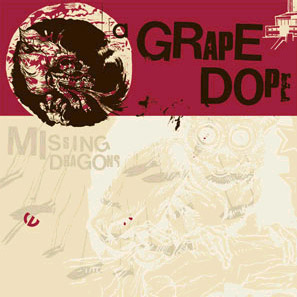 Showcasing his repertoire on the keyboard, sampler and mixing consoleunder the alias of A Grape Dope, Chicago-based drummer John Herndon(Tortoise, Isotope 217) presents six new varying tracks that make uphis latest EP. No stranger to the producer's chair, in recent yearsHerndon has provided re-mixes for other artists, while also releasing afew of his own dub-influenced compositions via the Hefty Records Immediate Actionseries. "Action: Showered Us" leads off the disc with its infectiouslive samba school-styled rhythms and muted basslines that kick thetrack into high gear, complete with handclaps. From the Hip Hopcollective Anitcon, Dose One lends his distinct, multi-layered vocalsto the bouncy "Red Hat Attack" over busy programmed machine beats,staccato low-end and near dissonant organ drones. The compositionalsounds and juxtaposition of car crashes and toddlers-in-the-park themesmake for an odd yet very interesting track. The disc's biggest surpriseand definite highlight is the soulful ballad "I'll Spread It" whichfeatures Herndon's emotional vocoder stylings along with some tenderbass and chord progressions that lilt and sway just beautifully. Theunderlying purr of additional electronic elements round out thecomposition nicely. Herndon's interesting compositional style andshifting rhythms draw from several different influences, yet still comeacross as distinct in their own setting. The strong, at times angularcompositions on Missing Dragons should dispel the myth that drummers are only capable of counting and hitting stuff.
Showcasing his repertoire on the keyboard, sampler and mixing consoleunder the alias of A Grape Dope, Chicago-based drummer John Herndon(Tortoise, Isotope 217) presents six new varying tracks that make uphis latest EP. No stranger to the producer's chair, in recent yearsHerndon has provided re-mixes for other artists, while also releasing afew of his own dub-influenced compositions via the Hefty Records Immediate Actionseries. "Action: Showered Us" leads off the disc with its infectiouslive samba school-styled rhythms and muted basslines that kick thetrack into high gear, complete with handclaps. From the Hip Hopcollective Anitcon, Dose One lends his distinct, multi-layered vocalsto the bouncy "Red Hat Attack" over busy programmed machine beats,staccato low-end and near dissonant organ drones. The compositionalsounds and juxtaposition of car crashes and toddlers-in-the-park themesmake for an odd yet very interesting track. The disc's biggest surpriseand definite highlight is the soulful ballad "I'll Spread It" whichfeatures Herndon's emotional vocoder stylings along with some tenderbass and chord progressions that lilt and sway just beautifully. Theunderlying purr of additional electronic elements round out thecomposition nicely. Herndon's interesting compositional style andshifting rhythms draw from several different influences, yet still comeacross as distinct in their own setting. The strong, at times angularcompositions on Missing Dragons should dispel the myth that drummers are only capable of counting and hitting stuff. 
The second full length album from Mr. Schnauss acts as an amazing springtime soundtrack, as all the trees are budding and the grass is turning a vivid green (with the exception of "Blumenthal," which can easily be music for an ice skating couple illuminated by Christmas lights).
 With a warning on the disc advising of potential damage to certain audio systems (headphone use not advisable), the self-titled second release from Chicago avant-rock quartet Sterling lets loose a hybrid of compositions that could be the bastard child of jazz, classical and metal, conceived during a Dario Argento flick.
With a warning on the disc advising of potential damage to certain audio systems (headphone use not advisable), the self-titled second release from Chicago avant-rock quartet Sterling lets loose a hybrid of compositions that could be the bastard child of jazz, classical and metal, conceived during a Dario Argento flick.
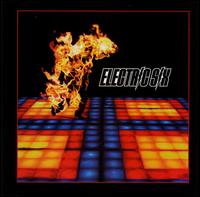 Do you want to know how they keep starting fires? The Electric Sixfirst gained attention with their single, "Danger! High Voltage," whichlaid down the blueprint for their dance garage style and penchant forabsurd lyrics ("Fire in the disco / Fire in the Taco Bell!"), deliveredwith conviction by singer Dick Valentine and (alleged guest) JackWhite. Their sound was a strange brew of disco beats, surf squalls, andAndrew W.K. party riffing. While that single was immensely enjoyable,its novel, what-the-hell-is-this attraction hinted that the ElectricSix might find it hard to keep it up over the course of an entire LP.On Fire,the Detroit residents look to hold you in their grasp with songs thatdescribe their favorite pastimes, which include fire, the night,dancing, nuclear war, women, bars, and synthesizers. Often, theirbacchanalian single mindedness leads to redundancy, as on the track"Gay Bar," which commands that together we should "start a nuclear war/ at the gay bar," being immediately followed by the song "Nuclear War(On the Dance Floor)." Regardless, the former track is prettyconvincing, coming off as the hard rock party anthem of the not todistant future (it has already spawned one of those dancing cat onlineflash videos). Electric Six manages to top "Danger!" in unusual,unbalanced brilliance with "I'm the Bomb." Maybe I'm just a sucker fora song about, what else, dancing and women, which uses the word"gerrymandering." "Three, two, one, I'm the bomb," declares the chorus,"and I'm ready to go off on your shit." They're sublimely cocky, with aflair for the dramatic and a powerful desire to be looked at. I mean,they yell "Solo!" before they start a guitar solo at least twice.That's how much they want you to pay attention to them. Still, evenwith those occasional sparks, 'Fire' contains songs like "ElectricDemons In Love," "Naked Pictures (Of Your Mother)," and "She's White"which all smear together in a blur of generic lack of inspiration.Their original themes never vary much, and the frequent overlap tendsto make for a tedious listen, in total. Fire doesn't do much todispel the label of novelty that "Danger!" found attached to it, andthat's what makes the moments of quirk so fun.
Do you want to know how they keep starting fires? The Electric Sixfirst gained attention with their single, "Danger! High Voltage," whichlaid down the blueprint for their dance garage style and penchant forabsurd lyrics ("Fire in the disco / Fire in the Taco Bell!"), deliveredwith conviction by singer Dick Valentine and (alleged guest) JackWhite. Their sound was a strange brew of disco beats, surf squalls, andAndrew W.K. party riffing. While that single was immensely enjoyable,its novel, what-the-hell-is-this attraction hinted that the ElectricSix might find it hard to keep it up over the course of an entire LP.On Fire,the Detroit residents look to hold you in their grasp with songs thatdescribe their favorite pastimes, which include fire, the night,dancing, nuclear war, women, bars, and synthesizers. Often, theirbacchanalian single mindedness leads to redundancy, as on the track"Gay Bar," which commands that together we should "start a nuclear war/ at the gay bar," being immediately followed by the song "Nuclear War(On the Dance Floor)." Regardless, the former track is prettyconvincing, coming off as the hard rock party anthem of the not todistant future (it has already spawned one of those dancing cat onlineflash videos). Electric Six manages to top "Danger!" in unusual,unbalanced brilliance with "I'm the Bomb." Maybe I'm just a sucker fora song about, what else, dancing and women, which uses the word"gerrymandering." "Three, two, one, I'm the bomb," declares the chorus,"and I'm ready to go off on your shit." They're sublimely cocky, with aflair for the dramatic and a powerful desire to be looked at. I mean,they yell "Solo!" before they start a guitar solo at least twice.That's how much they want you to pay attention to them. Still, evenwith those occasional sparks, 'Fire' contains songs like "ElectricDemons In Love," "Naked Pictures (Of Your Mother)," and "She's White"which all smear together in a blur of generic lack of inspiration.Their original themes never vary much, and the frequent overlap tendsto make for a tedious listen, in total. Fire doesn't do much todispel the label of novelty that "Danger!" found attached to it, andthat's what makes the moments of quirk so fun.  Feedback as primary means of making live music seems to date from 1964. That was the year that Max Neuhaus debuted his Fontana Mix - Feed (see Brain v06i19) and when Robert Ashley brought fourth his tape, voice and feedback creation The Wolfman.Room feedback occurs when the sound from the loudspeakers in aperformance space reflect off walls and ceiling back to the microphone,as opposed to following more direct paths. In essence, the room itselfis set up to work as a cavity oscillator. The fun part is that whenthis happens the sound has the appearance of coming from differentpoints all over the room depending on exactly which reflections orwhich modes of oscillation dominate. Ashley's design for The Wolfmanuses a vocalist in front of the microphone singing gently into themicrophone and using his mouth to modulate the room feedback. There isalso a tape track, a full spectrum deluge of tape manipulated foundsounds, fed into the mix to provoke more variation in the feedback.Just how this works in a performance we will have to imagine since theperceptual effects of being inside the cavity oscillator are completelylost in a mere stereo recording. But what we get on the CD isnonetheless a full scale onslaught of highly dynamic noise that fullyholds the attention for its entire 18 minutes. It has a gritty rawenergy that any 90s noise artist would be very proud of but the humanvoice component takes it beyond the realm of mere electronics. The CDhas three other early Ashley tape compositions from 1957 to 1964 and ofthese The Bottleman from 1960 has captivated me. It wasoriginally the soundtrack to a film by George Manupelli featuring a mancollecting bottles in various desolate and dilapidated scenes of urbandecay. The music is quiet, very slow and has the same kind of insanedark ambience found in the soundtrack to Eraserhead. It is a tapemanipulation piece based on contact microphone feedback, found soundsand voice and, as with The Wolfman, it is the vocal componentthat adds the deepest tensions. Despite never having seen the film, theimage of a deranged person wandering around landscapes of discardedlife collecting bottles is easily imaged with the music being thesoundtrack in the near insane bottleman's mind. Fully deserving its 43plus minutes on the CD it is really very effective.
Feedback as primary means of making live music seems to date from 1964. That was the year that Max Neuhaus debuted his Fontana Mix - Feed (see Brain v06i19) and when Robert Ashley brought fourth his tape, voice and feedback creation The Wolfman.Room feedback occurs when the sound from the loudspeakers in aperformance space reflect off walls and ceiling back to the microphone,as opposed to following more direct paths. In essence, the room itselfis set up to work as a cavity oscillator. The fun part is that whenthis happens the sound has the appearance of coming from differentpoints all over the room depending on exactly which reflections orwhich modes of oscillation dominate. Ashley's design for The Wolfmanuses a vocalist in front of the microphone singing gently into themicrophone and using his mouth to modulate the room feedback. There isalso a tape track, a full spectrum deluge of tape manipulated foundsounds, fed into the mix to provoke more variation in the feedback.Just how this works in a performance we will have to imagine since theperceptual effects of being inside the cavity oscillator are completelylost in a mere stereo recording. But what we get on the CD isnonetheless a full scale onslaught of highly dynamic noise that fullyholds the attention for its entire 18 minutes. It has a gritty rawenergy that any 90s noise artist would be very proud of but the humanvoice component takes it beyond the realm of mere electronics. The CDhas three other early Ashley tape compositions from 1957 to 1964 and ofthese The Bottleman from 1960 has captivated me. It wasoriginally the soundtrack to a film by George Manupelli featuring a mancollecting bottles in various desolate and dilapidated scenes of urbandecay. The music is quiet, very slow and has the same kind of insanedark ambience found in the soundtrack to Eraserhead. It is a tapemanipulation piece based on contact microphone feedback, found soundsand voice and, as with The Wolfman, it is the vocal componentthat adds the deepest tensions. Despite never having seen the film, theimage of a deranged person wandering around landscapes of discardedlife collecting bottles is easily imaged with the music being thesoundtrack in the near insane bottleman's mind. Fully deserving its 43plus minutes on the CD it is really very effective.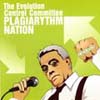 Remember that link of the week with the Oscar Meyer Weiner songanswering machine lady talking? Well, Mark Gunderson, aka The EvolutionControl Committee opens his current full-length masterpiece with thatvery same woman speaking along to the "Star Spangled Banner" as the"Star Spangled Bologna." Only a few years before people like Kid 606and Dsico were marrying Missy Elliott with Joy Division, the ECCcombined two flavors in perhaps one of the most groundbreaking (yetoverlooked) 7" singles of the 1990s, The Whipped Cream Mixes,where Public Enemy raps were matched with the music of Herb Alpbert& the Tijuana Brass. But the ECC aren's just mash-ups and cut-ups,as the Committee (much like Seeland label bosses, Negartivland)provides a healthy amount of gimmicky cheese, twisting and mutatingwords and songs into sounding like what they want to hear. While thisdisc compiles some of the finer moments of the ECC in the last fewyears since, it does also provide some brand new material forunderground superstar potential. "I Want A Cookie" jumps out first as avery aggressive self-help sounding woman gives empowerment advice overhorn-blaring hip 1960s-retro spy chase music. The classic "Rocked ByRape" is also included with Dan Rather's cut up samples over the ECC'sown AC/DC rip off riffs. The rhythmic usage is clever while the outputis absolutely hilarious, with examples like "Dramatic Alien Torture" /"Cancer Death Threat Fleeing for Their Lives" / "Voodoo Bizarre LoveTriangle," it's hard to keep up and impossible to tune out whenplaying. Four years after this song first surfaced, it has not lost itscharm, however it would have been nice to have a new revisit with allof Dan's quotes from the 2000 US Election Night overnight fiasco!(Search for some of those quotes online some time.) There are someother memorable moments like "Sex Re-Education," the cut-up 1950s-erasex education speech from a dad to his son, but at 29 tracks, therereally is a ton of forgettable filler.
Remember that link of the week with the Oscar Meyer Weiner songanswering machine lady talking? Well, Mark Gunderson, aka The EvolutionControl Committee opens his current full-length masterpiece with thatvery same woman speaking along to the "Star Spangled Banner" as the"Star Spangled Bologna." Only a few years before people like Kid 606and Dsico were marrying Missy Elliott with Joy Division, the ECCcombined two flavors in perhaps one of the most groundbreaking (yetoverlooked) 7" singles of the 1990s, The Whipped Cream Mixes,where Public Enemy raps were matched with the music of Herb Alpbert& the Tijuana Brass. But the ECC aren's just mash-ups and cut-ups,as the Committee (much like Seeland label bosses, Negartivland)provides a healthy amount of gimmicky cheese, twisting and mutatingwords and songs into sounding like what they want to hear. While thisdisc compiles some of the finer moments of the ECC in the last fewyears since, it does also provide some brand new material forunderground superstar potential. "I Want A Cookie" jumps out first as avery aggressive self-help sounding woman gives empowerment advice overhorn-blaring hip 1960s-retro spy chase music. The classic "Rocked ByRape" is also included with Dan Rather's cut up samples over the ECC'sown AC/DC rip off riffs. The rhythmic usage is clever while the outputis absolutely hilarious, with examples like "Dramatic Alien Torture" /"Cancer Death Threat Fleeing for Their Lives" / "Voodoo Bizarre LoveTriangle," it's hard to keep up and impossible to tune out whenplaying. Four years after this song first surfaced, it has not lost itscharm, however it would have been nice to have a new revisit with allof Dan's quotes from the 2000 US Election Night overnight fiasco!(Search for some of those quotes online some time.) There are someother memorable moments like "Sex Re-Education," the cut-up 1950s-erasex education speech from a dad to his son, but at 29 tracks, therereally is a ton of forgettable filler. With the release of their second full-length album, 2001's Scary World Theory, Lali Puna have not only secured their place as not just another Notwist "side project," but have become one of my favorite groups. It's tough to arrange a schedule when your time is divided amongst a number of other bands, as Marcus Acher (1/2 of the core duo) knows very well. In the time between releases, the group has taken the opportunity to leak out an unsurfaced song and its apparent dub counterpart.
With the release of their second full-length album, 2001's Scary World Theory, Lali Puna have not only secured their place as not just another Notwist "side project," but have become one of my favorite groups. It's tough to arrange a schedule when your time is divided amongst a number of other bands, as Marcus Acher (1/2 of the core duo) knows very well. In the time between releases, the group has taken the opportunity to leak out an unsurfaced song and its apparent dub counterpart.
"Left Handed" might not have fit in with the languid sounds of Scary World Theory with its punchy rhythms and distorted tonally aggressive guitars, but it is strong enough to stand as a fantastic single track. For the "dub" version, the group took a route that I whole-heartedly support: making something that sounds almost completely different. It's entirely instrumental, a completely different speed, with dub-inspired rhythms, effects, and only a minute few elements carried over from the original. The three-tracker is rounded out with a song -not- originally by the Human League, but ended up on a Human League covers record back in 2000. "Together In Electric Dreams" was the theme to the forgettable '80s film Electric Dreams (originally by Phil Oakey and Giorgio Moroder) and Lali Puna's reinterpretation strays a healthy amount from the original, omitting a wealth of vocals and utilizing the band's almost signature sound of gliding synths, electronic beats, and clean guitar work. While it's always nice to get two new songs from a fave band, I'm actually rather disappointed in the fact that this would have been a great opportunity to include some old 7" tracks, namely the two remixes from the Nin-Com-Pop single and the two songs from the The Safe Side single which has eluded me for years. 
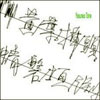 This is one of the finer noise albums and one that challenges other noise performers to up the ante. While the method in which this record was created is interesting, the actual sounds and rhythms that compose the album are its most attractive elements by far. Yasunao Tone was created by taking various Chinese poems and converting the characters into wave forms via a character recognition program.
This is one of the finer noise albums and one that challenges other noise performers to up the ante. While the method in which this record was created is interesting, the actual sounds and rhythms that compose the album are its most attractive elements by far. Yasunao Tone was created by taking various Chinese poems and converting the characters into wave forms via a character recognition program.
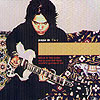 For the second installation in his Audio Tour Diary series, Dave Pajopresents three more stripped-down tunes, warmly recorded in Chicago,Bloomington and Los Angeles over the past months. The Papa M arranged "Blackis the Color," showcases his tasteful acoustic guitar picking style withdistant swoops of synthesizer for a reworking that makes the tune his own.The airy tone of his laid back vocals are jolted on the way out with astern, spoken delivery of the song's title. From his association withStereolab, the piano and strings-complimented "Mary Was the Kind," paystribute to a dear, departed friend Mary Hansen. The strumming guitar progressionsand catchy lyrics and melody on the traditional sounding "World's GreatestSin" are evident of just how inside the southern folk songwriting style Pajocan get, both musical and lyrically. A hint of accordion-type tones make itall the more convincing. Nested in the last few minutes of the track is anbeautifully uplifting multi-tracked guitar and strings incidentalcomposition which is just perfect as is. It should be interesting to see ifPajo works any of the tunes from his on-the-road sessions into his next fulllength disc, or if this will be the only recorded performances as they havea certain charm of being slightly undressed.
For the second installation in his Audio Tour Diary series, Dave Pajopresents three more stripped-down tunes, warmly recorded in Chicago,Bloomington and Los Angeles over the past months. The Papa M arranged "Blackis the Color," showcases his tasteful acoustic guitar picking style withdistant swoops of synthesizer for a reworking that makes the tune his own.The airy tone of his laid back vocals are jolted on the way out with astern, spoken delivery of the song's title. From his association withStereolab, the piano and strings-complimented "Mary Was the Kind," paystribute to a dear, departed friend Mary Hansen. The strumming guitar progressionsand catchy lyrics and melody on the traditional sounding "World's GreatestSin" are evident of just how inside the southern folk songwriting style Pajocan get, both musical and lyrically. A hint of accordion-type tones make itall the more convincing. Nested in the last few minutes of the track is anbeautifully uplifting multi-tracked guitar and strings incidentalcomposition which is just perfect as is. It should be interesting to see ifPajo works any of the tunes from his on-the-road sessions into his next fulllength disc, or if this will be the only recorded performances as they havea certain charm of being slightly undressed. 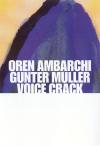 On the lowest level, this disc is a dense stream of fascinating soundsthat highlight the interaction between these innovative improvisers.The cacophony of buzzing and whirring is not unlike Müller and VoiceCrack's other project, Poire_Z, and Ambarchi's processed guitarcombines very well with their "cracked everyday electronics"aesthetic—almost anti-technology in its espousing of the commonplace.There's a lot to listen for on this disc and it all seems like itbelongs, from sine waves to sci-fi tones remeniscent of the sounds inthe new Matrix film (but not of the college freshman philosophizing,thankfully). Attempts to put this music on in the background seemfutile as it's just too attention-demanding. A few minutes in, it'shard to ignore the storm of sound threatening to tear the room apart.Even when it's a foreboding wall of mechanical noise, this music feelshuman in its production and arrangement, remeniscent more of thepotential for directly conveying emotion with non-traditionalinstrumentation than of sterile machine music. The disc opens with hightones and some of Müller's "selected percussion" playing a slow,metronomic beat, and the percussive rhythms throughout this CD areprobably more overt (relatively speaking) than some of his other work.The piece is pretty nonlinear, which is nice as it's not a blatant"build toward something and come back" formula. It ends with somehypnotic, quiet drones which continue into the second track, wherethey're joined by some clicking rhythms, buzzing, and slowly modulatedoscillations as the music gets a little frenetic. "Grounding Oysters"is static for most of its duration, exploring the subtle interactionbetween a range of sounds; and "Oystered" ends the disc with more hightones and rhythms. This CD definitely fits well in the canon of theseplayers. While I really enjoy it, I'm not sure if there's much todistinguish it from their other work. But the subtle elements that eachmember of this collaboration provides make it a fine listen for fans ofthis type of sound.
On the lowest level, this disc is a dense stream of fascinating soundsthat highlight the interaction between these innovative improvisers.The cacophony of buzzing and whirring is not unlike Müller and VoiceCrack's other project, Poire_Z, and Ambarchi's processed guitarcombines very well with their "cracked everyday electronics"aesthetic—almost anti-technology in its espousing of the commonplace.There's a lot to listen for on this disc and it all seems like itbelongs, from sine waves to sci-fi tones remeniscent of the sounds inthe new Matrix film (but not of the college freshman philosophizing,thankfully). Attempts to put this music on in the background seemfutile as it's just too attention-demanding. A few minutes in, it'shard to ignore the storm of sound threatening to tear the room apart.Even when it's a foreboding wall of mechanical noise, this music feelshuman in its production and arrangement, remeniscent more of thepotential for directly conveying emotion with non-traditionalinstrumentation than of sterile machine music. The disc opens with hightones and some of Müller's "selected percussion" playing a slow,metronomic beat, and the percussive rhythms throughout this CD areprobably more overt (relatively speaking) than some of his other work.The piece is pretty nonlinear, which is nice as it's not a blatant"build toward something and come back" formula. It ends with somehypnotic, quiet drones which continue into the second track, wherethey're joined by some clicking rhythms, buzzing, and slowly modulatedoscillations as the music gets a little frenetic. "Grounding Oysters"is static for most of its duration, exploring the subtle interactionbetween a range of sounds; and "Oystered" ends the disc with more hightones and rhythms. This CD definitely fits well in the canon of theseplayers. While I really enjoy it, I'm not sure if there's much todistinguish it from their other work. But the subtle elements that eachmember of this collaboration provides make it a fine listen for fans ofthis type of sound.  Listening to the anachronistic, neo-pagan German folk music ofWaldteufel, one would never suspect that it is the work of twoAmericans from Portland, Oregon. Normally, I would immediately dismissthis sort of pseudo-European posturing as laughable, but Waldteufelmanage to neatly sidestep all of the usual pitfalls that turn this kindof cultural co-opting into a joke. Surprisingly, Heimliches Deutschland(Hidden Germany), is an embarassment of riches: a sincere andbeautifully executed set of German "volkische" songs extolling Northernmyths, traditions and mysteries. Waldteufel is the duo of Annabel Leeand Markus Wolff, formerly a percussionist for post-industrialagitators Crash Worship. Wolff sings and beats hand drums, while Leerounds out the sound with violin, viola and accordion. There are somesubtle synthesizer flourishes and limited studio effects that help totransport the listener to the Wald Schwarzer (Black Forest) circa 1895.One can almost hear the crackling of the bonfire and the smell of wildboar roasting on the spit as Waldteufel play their revelatory paganhymns. Other Deutsch-obsessed industrial folksters like Death in Juneand Der Blutharsch would be far too cynical to produce music thisserious, subtle and lovely. Anyone who knows anything about late 19thcentury German history knows that it was a time of cultural rennaisanceand the birth of the "volkische" movement: a movement towards theabandonment of Christianity and an embrace of the ideals and purity ofthe Aryan tradition. This mythical heritage encompassed occultreligious practices, language, politics, and even music. It was thismovement that paved the way for the Thule and other undergroundright-wing groups that eventually brought Hitler and Nazis to power.Although Waldteufel hover dangerously close to this area, their musicis untainted by politics or historical revisionism. Markus Wolff writesmost of the tracks himself, but a few of the songs are new arrangementsof German folk songs from this golden age period. In "Neun Welten All"(The Nine Worlds), Wolff beats out a hand rhythm while his richbaritone is overdubbed with whispers, deep vocal drones, viola andflute. It's all a little messy and underproduced, a conscious aestheticchoice which lends credibility to this material. "Lichtkreuzweihe"(Consecration of the Luminous Cross) is such a deeply heroic ode toWotan's cross, I feel as if I'm there in a candle-lit Masonic lodge,where Runic magicians make communal music for nobody but themselves.The longest track, "Wotans Wilde Jagd" (Wotan's Wild Hunt), is also themost infectious. It begins with a sythesized horn fanfare that isimmediately reminiscent of Wendy Carlos' Mozart renditions for hersoundtrack to A Clockwork Orange. Multi-tracked vocals begin, with ahearty, catchy refrain worthy of a biergarten sing-along. The hauntingfinal track "Nachhall," (Reprise) is the strangest of all, aneffects-heavy revisit of "The Nine Worlds" that chops up and dubs outthe vocals and adds layers of reverb and echo. This is a fittinglyspectral end to what must be the most unique and unexpected "retro"albums to come along in quite some time.
Listening to the anachronistic, neo-pagan German folk music ofWaldteufel, one would never suspect that it is the work of twoAmericans from Portland, Oregon. Normally, I would immediately dismissthis sort of pseudo-European posturing as laughable, but Waldteufelmanage to neatly sidestep all of the usual pitfalls that turn this kindof cultural co-opting into a joke. Surprisingly, Heimliches Deutschland(Hidden Germany), is an embarassment of riches: a sincere andbeautifully executed set of German "volkische" songs extolling Northernmyths, traditions and mysteries. Waldteufel is the duo of Annabel Leeand Markus Wolff, formerly a percussionist for post-industrialagitators Crash Worship. Wolff sings and beats hand drums, while Leerounds out the sound with violin, viola and accordion. There are somesubtle synthesizer flourishes and limited studio effects that help totransport the listener to the Wald Schwarzer (Black Forest) circa 1895.One can almost hear the crackling of the bonfire and the smell of wildboar roasting on the spit as Waldteufel play their revelatory paganhymns. Other Deutsch-obsessed industrial folksters like Death in Juneand Der Blutharsch would be far too cynical to produce music thisserious, subtle and lovely. Anyone who knows anything about late 19thcentury German history knows that it was a time of cultural rennaisanceand the birth of the "volkische" movement: a movement towards theabandonment of Christianity and an embrace of the ideals and purity ofthe Aryan tradition. This mythical heritage encompassed occultreligious practices, language, politics, and even music. It was thismovement that paved the way for the Thule and other undergroundright-wing groups that eventually brought Hitler and Nazis to power.Although Waldteufel hover dangerously close to this area, their musicis untainted by politics or historical revisionism. Markus Wolff writesmost of the tracks himself, but a few of the songs are new arrangementsof German folk songs from this golden age period. In "Neun Welten All"(The Nine Worlds), Wolff beats out a hand rhythm while his richbaritone is overdubbed with whispers, deep vocal drones, viola andflute. It's all a little messy and underproduced, a conscious aestheticchoice which lends credibility to this material. "Lichtkreuzweihe"(Consecration of the Luminous Cross) is such a deeply heroic ode toWotan's cross, I feel as if I'm there in a candle-lit Masonic lodge,where Runic magicians make communal music for nobody but themselves.The longest track, "Wotans Wilde Jagd" (Wotan's Wild Hunt), is also themost infectious. It begins with a sythesized horn fanfare that isimmediately reminiscent of Wendy Carlos' Mozart renditions for hersoundtrack to A Clockwork Orange. Multi-tracked vocals begin, with ahearty, catchy refrain worthy of a biergarten sing-along. The hauntingfinal track "Nachhall," (Reprise) is the strangest of all, aneffects-heavy revisit of "The Nine Worlds" that chops up and dubs outthe vocals and adds layers of reverb and echo. This is a fittinglyspectral end to what must be the most unique and unexpected "retro"albums to come along in quite some time. The comforting compositions of Jimmy LaValle and the spacious but densesounds of On Air Library make for the perfect alone-time listen orperhaps the soundtrack to time spent with a loved one. Everything onthis album is a whisper, a gentle breeze passing over my body. TheAlbum Leaf tracks are simple and cascading. Each song begins simplyenough and then each element begins to flow into another flawlessly; ariver of twinkling percussion and lullabies woven out of dream-stuff."Lamplight" is certainly a highlight. Its soft-as-a-pillow melodysounds like raindrops falling slowly onto a pond. On Air Library'smusic is just as beautiful and is a very exciting band for me. "Ex'sand Oh's" begins with distant voices and a guitar that reminds me of atropical beach somwhere at night. The mood is set wonderfully and "Passthe Mic" and "Faux Fromm" do not disappoint. Soft, bouncing guitars andscattered percussion combine in new and surprisingly fresh ways thatmake for a luscious and inviting listen. Vocals churn and distortionblossoms on "Faux Fromm," a stunning and shining song that makes mefeel as if I'm floating through the clouds and into the heavens. When Iclose my eyes and listen to this, I can't help but think of vacantwharehouses and dimly lit fields in the middle of nowhere. All thesongs fit together perfectly on this EP and the musicians here reallycompliment eachother. I am interested in The Album Leaf more afterhearing this and On Air Library is definitely a band to watch for; theyhave a full length album due out this fall that I cannot wait to hear.
The comforting compositions of Jimmy LaValle and the spacious but densesounds of On Air Library make for the perfect alone-time listen orperhaps the soundtrack to time spent with a loved one. Everything onthis album is a whisper, a gentle breeze passing over my body. TheAlbum Leaf tracks are simple and cascading. Each song begins simplyenough and then each element begins to flow into another flawlessly; ariver of twinkling percussion and lullabies woven out of dream-stuff."Lamplight" is certainly a highlight. Its soft-as-a-pillow melodysounds like raindrops falling slowly onto a pond. On Air Library'smusic is just as beautiful and is a very exciting band for me. "Ex'sand Oh's" begins with distant voices and a guitar that reminds me of atropical beach somwhere at night. The mood is set wonderfully and "Passthe Mic" and "Faux Fromm" do not disappoint. Soft, bouncing guitars andscattered percussion combine in new and surprisingly fresh ways thatmake for a luscious and inviting listen. Vocals churn and distortionblossoms on "Faux Fromm," a stunning and shining song that makes mefeel as if I'm floating through the clouds and into the heavens. When Iclose my eyes and listen to this, I can't help but think of vacantwharehouses and dimly lit fields in the middle of nowhere. All thesongs fit together perfectly on this EP and the musicians here reallycompliment eachother. I am interested in The Album Leaf more afterhearing this and On Air Library is definitely a band to watch for; theyhave a full length album due out this fall that I cannot wait to hear.- The Album Leaf - Lamplight
- On Air Library - Ex's and Oh's
- On Air Library - Faux Fromm
 Eluvium is Matthew Cooper's vehicle for submerging controlled dronesfrom his guitar and piano in water and letting them out in a ceruleansubmarine world. The entire timbre of the album is an exploration ofwhat music sounds like underwater. Yet few waves or currents jostle themusic's placidity; each song is eerily consistent, not changing verymuch over the course of its minutes (trickier than imaginable,considering one particular song exceeds 15 minutes). Eluvium songs onlyseem to change over the course of epochs, not eighth notes, but theresistance to change is disciplined, rather than lazy or shortsighted.Each song has the potential to explode or diverge, but instead remainson the easy river and explores a steady tack of controlled dissonancemixed with elegance. The album begins with "The Unfinished," whosesynthetic warbles are punctuated by a errant guitar line every now andthen. The warble returns in "Under the Water It Glowed," but now theguitar line is more prominent melodically. By this time, it seems thatEluvium's songs are slowed down by some sort of physical effect, likediffraction through water particles. Through the aquatic slowness, theguts of the song—or perhaps even its soul—are almost seen. "ThereWasn't Anything" is a straightforward piano dirge with some overlaidfield recordings of voices and conversations, followed by "Zerthis wasa Shivering Human Image," a sonorous epic which oscillates between twochords while the surrounding distortion ebbs and flows. Seemingly threethousand scratchy crescendos occur, filtered through a sediment ofstatic. It's one of those songs which causes you to exhale powerfullywhen it eventually ends, when the tension is finally laid slack. Thecandor of such Eluvium songs, ones which force a confrontation with thesong's guts, is startling. Comparisons to Brian Eno are hard to shrugoff for Eluvium, but they are not indictments. This music is of the EnoSchool (think Apollo: Atmospheres and Soundtracks) and Matthew Cooper would seem to be an Eno acolyte, but the songs are studied without being facsimiles. Lambent Materialis a fascinating listen, and when the last song, "I Am So Much More MeThat You Are Perfectly You," finally delivers the actual sounds ofwater and rain beneath the piano's melody, you are reminded that youcould have been drowning this whole time and not even noticed it.
Eluvium is Matthew Cooper's vehicle for submerging controlled dronesfrom his guitar and piano in water and letting them out in a ceruleansubmarine world. The entire timbre of the album is an exploration ofwhat music sounds like underwater. Yet few waves or currents jostle themusic's placidity; each song is eerily consistent, not changing verymuch over the course of its minutes (trickier than imaginable,considering one particular song exceeds 15 minutes). Eluvium songs onlyseem to change over the course of epochs, not eighth notes, but theresistance to change is disciplined, rather than lazy or shortsighted.Each song has the potential to explode or diverge, but instead remainson the easy river and explores a steady tack of controlled dissonancemixed with elegance. The album begins with "The Unfinished," whosesynthetic warbles are punctuated by a errant guitar line every now andthen. The warble returns in "Under the Water It Glowed," but now theguitar line is more prominent melodically. By this time, it seems thatEluvium's songs are slowed down by some sort of physical effect, likediffraction through water particles. Through the aquatic slowness, theguts of the song—or perhaps even its soul—are almost seen. "ThereWasn't Anything" is a straightforward piano dirge with some overlaidfield recordings of voices and conversations, followed by "Zerthis wasa Shivering Human Image," a sonorous epic which oscillates between twochords while the surrounding distortion ebbs and flows. Seemingly threethousand scratchy crescendos occur, filtered through a sediment ofstatic. It's one of those songs which causes you to exhale powerfullywhen it eventually ends, when the tension is finally laid slack. Thecandor of such Eluvium songs, ones which force a confrontation with thesong's guts, is startling. Comparisons to Brian Eno are hard to shrugoff for Eluvium, but they are not indictments. This music is of the EnoSchool (think Apollo: Atmospheres and Soundtracks) and Matthew Cooper would seem to be an Eno acolyte, but the songs are studied without being facsimiles. Lambent Materialis a fascinating listen, and when the last song, "I Am So Much More MeThat You Are Perfectly You," finally delivers the actual sounds ofwater and rain beneath the piano's melody, you are reminded that youcould have been drowning this whole time and not even noticed it. 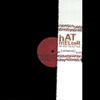 "Unknown" is a good way to describe this album. With the only providedinformation being the names of the four players, I'm able to listenwithout making any assumptions. The music sounds like very dynamicelectroacoustic improv, with quiet strings and digital mumbling givingway to noisy, highly textural crescendos. Things shift quickly anddon't fall back on familiar formulas. The strings and especiallypercussion are the most recognizable instruments, but there's a strongelectronic leaning. The tonal range of the group is so great that I wassurprised to learn that the lineup is two cellists and twopercussionists, as they're all capable of extracting a wide range ofsounds from their instruments, whether aided by electronics or not.This is one of the most consistently interesting improv albums I'veheard lately; for its entire length it really seems unknown,unpredictable, and utterly fascinating. The first of two sides has somecut-up, processed cello and some scraped acoustic strings in thebackground that develops with an amazing sense of cohesion as it shiftsgears into playing that sounds almost like chamber music, gentle buttense string interludes, and percussion-driven free playing. There's awealth of detail in this recording, both in the melodic features andburied beneath the surface in the sounds themselves. The sense of spaceis also well-captured; the second side begins with some stunning, slowcello textures and cymbal-heavy percussion that seems like it's comingfrom another room, heightening its mysterious beauty. That endsabruptly and they move onto other, busier-sounding concepts. This is avery impressive recording, and, as it's only available as a limited12", a good reason to own a turntable.
"Unknown" is a good way to describe this album. With the only providedinformation being the names of the four players, I'm able to listenwithout making any assumptions. The music sounds like very dynamicelectroacoustic improv, with quiet strings and digital mumbling givingway to noisy, highly textural crescendos. Things shift quickly anddon't fall back on familiar formulas. The strings and especiallypercussion are the most recognizable instruments, but there's a strongelectronic leaning. The tonal range of the group is so great that I wassurprised to learn that the lineup is two cellists and twopercussionists, as they're all capable of extracting a wide range ofsounds from their instruments, whether aided by electronics or not.This is one of the most consistently interesting improv albums I'veheard lately; for its entire length it really seems unknown,unpredictable, and utterly fascinating. The first of two sides has somecut-up, processed cello and some scraped acoustic strings in thebackground that develops with an amazing sense of cohesion as it shiftsgears into playing that sounds almost like chamber music, gentle buttense string interludes, and percussion-driven free playing. There's awealth of detail in this recording, both in the melodic features andburied beneath the surface in the sounds themselves. The sense of spaceis also well-captured; the second side begins with some stunning, slowcello textures and cymbal-heavy percussion that seems like it's comingfrom another room, heightening its mysterious beauty. That endsabruptly and they move onto other, busier-sounding concepts. This is avery impressive recording, and, as it's only available as a limited12", a good reason to own a turntable.  Steel-drum-led instrumentals give way to doo-wop laments about the woesand ways of love and foot-tapping jazz freak-outs glide into floweryaccordian pieces that somehow get me thinking about coffee, fine wines,and men in really cool, really dark sunglasses. I think it is safe tosay that Jeremy Jacobson's mind must be a mishmash of medievaltroubadours, pop stars, and drunken French lovers. All but one of thesongs are under three minutes—and most are under two—yet the music allgels together somehow. Perhaps this phenomenon has something to do withthe fact that Jacobson plays every instrument on every song (except fortwo) and sometimes plays them simultaneously. Forms and Folliesjumps from Motown to classically-arranged canons effortlessly andquickly without being too scatter-brained. The album, despite thenumerous influences it draws from, feels incredibly focused. When thesleepy, soft-as-a-pillow serenity of "Walking to Weston's" suddenlyflew into over-drive and "Who's to Say Your Soul's Not Carbon" rocketedthrough my ears, I only smiled and marveled at how well it all seemedto fit together and make perfect sense. The last four tracks are a purejoy to listen to and make for great night music (the sound of cricketsis the perfect accompaniment to these whimsical piano pieces). "NoPlace for My Kitten" is particularly incredible, however: heavilyprocessed vocals scratch and struggle to break free of their prisonwhile an almost remorseful accordian-led melody plays calmly andunsuspectingly over the top. My only gripe is that this album is justover thirty-two minutes long and when something sounds this good, Ialways want more.
Steel-drum-led instrumentals give way to doo-wop laments about the woesand ways of love and foot-tapping jazz freak-outs glide into floweryaccordian pieces that somehow get me thinking about coffee, fine wines,and men in really cool, really dark sunglasses. I think it is safe tosay that Jeremy Jacobson's mind must be a mishmash of medievaltroubadours, pop stars, and drunken French lovers. All but one of thesongs are under three minutes—and most are under two—yet the music allgels together somehow. Perhaps this phenomenon has something to do withthe fact that Jacobson plays every instrument on every song (except fortwo) and sometimes plays them simultaneously. Forms and Folliesjumps from Motown to classically-arranged canons effortlessly andquickly without being too scatter-brained. The album, despite thenumerous influences it draws from, feels incredibly focused. When thesleepy, soft-as-a-pillow serenity of "Walking to Weston's" suddenlyflew into over-drive and "Who's to Say Your Soul's Not Carbon" rocketedthrough my ears, I only smiled and marveled at how well it all seemedto fit together and make perfect sense. The last four tracks are a purejoy to listen to and make for great night music (the sound of cricketsis the perfect accompaniment to these whimsical piano pieces). "NoPlace for My Kitten" is particularly incredible, however: heavilyprocessed vocals scratch and struggle to break free of their prisonwhile an almost remorseful accordian-led melody plays calmly andunsuspectingly over the top. My only gripe is that this album is justover thirty-two minutes long and when something sounds this good, Ialways want more. 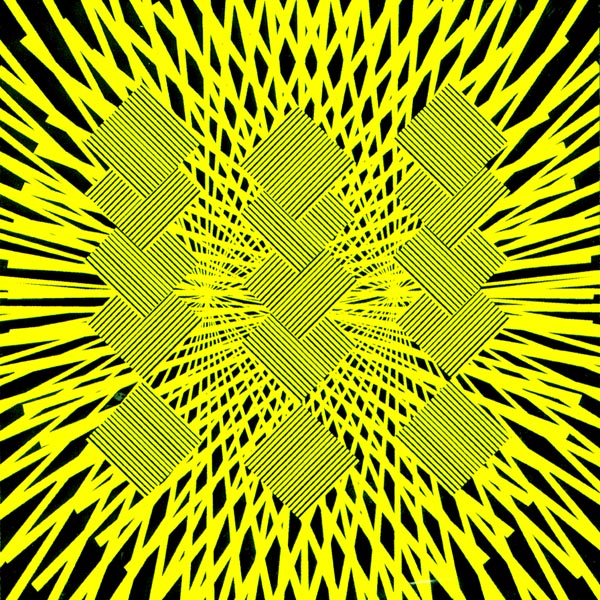 I've been calling this band Bang Bang Bang, but some of my friendsinsist on calling them Chik Chik Chik. According the pronunciationguide on the cover of this new two-track single, we're both right.However, I really prefer the way Bang Bang Bang sounds, and it kind ofrolls off the tongue in an exciting way. "Exciting" is they key wordfor !!!, whose vivid, energetic reinvisionment of early-80'sdance-influenced post-punk thrives on tense, ass-shaking grooves. Sincetheir 2000 debut, !!! have led the way for a whole crop of new bandsexploiting this sound, as well as a rediscovery of the original artistsand classic albums from the period that have been collecting dust fortwenty years. Their 'sister' band Out Hud, featuring some of the samemembers, upped the stakes even higher with the amazing album Street Dad,which concentrated on leftfield instrumental disco with a host ofbrilliant production flourishes. Hearing this new two-track CD singleby !!!, it is now unclear where !!! ends and Out Hud begins. Where!!!'s debut had a lean, guitar-driven sound not dissimiliar from Gangof Four, "Me and Giuliani Down By the Schoolyard" contains all of thedense, layered production that made Out Hud sound so unique. In fact,!!! now sound exactly like Out Hud with vocals. Whether this isindicative of a Parliament/Funkadelic kind of cross-pollenating bandrelationship is uncertain, but I have no complaints about the music,which is fantastic as ever. The title track is a nine-minute "truestory" that urges the stiff, Republican leadership of New York City tolose their inhibitions and "get on up & move it" to the music. Thevocals are buried and mostly inaudible, but it doesn't really matterbecause the beat is all you really care about. The bassline is an echoof ESG's "Erase You," and the production utilizes the whole repertoireof Out Hud's dub-influenced studio trickery to achieve the maximumgroove. Track two is an excellent remix of the song "Intensify" fromthe debut album. "Intensifieder Sunracappellectroshit Mix 03" riflesthrough the book of dub and early house production tricks to build anintensity that is far from gimmicky. The track is reduced to vocals,drums and bass, which are alternately echoed, delayed, layered andmutated. Stabs of synth and odd, CD-skip "hiccups" add to the eclecticdrama of the track. This is an awesome single. Can a new full-length befar behind?
I've been calling this band Bang Bang Bang, but some of my friendsinsist on calling them Chik Chik Chik. According the pronunciationguide on the cover of this new two-track single, we're both right.However, I really prefer the way Bang Bang Bang sounds, and it kind ofrolls off the tongue in an exciting way. "Exciting" is they key wordfor !!!, whose vivid, energetic reinvisionment of early-80'sdance-influenced post-punk thrives on tense, ass-shaking grooves. Sincetheir 2000 debut, !!! have led the way for a whole crop of new bandsexploiting this sound, as well as a rediscovery of the original artistsand classic albums from the period that have been collecting dust fortwenty years. Their 'sister' band Out Hud, featuring some of the samemembers, upped the stakes even higher with the amazing album Street Dad,which concentrated on leftfield instrumental disco with a host ofbrilliant production flourishes. Hearing this new two-track CD singleby !!!, it is now unclear where !!! ends and Out Hud begins. Where!!!'s debut had a lean, guitar-driven sound not dissimiliar from Gangof Four, "Me and Giuliani Down By the Schoolyard" contains all of thedense, layered production that made Out Hud sound so unique. In fact,!!! now sound exactly like Out Hud with vocals. Whether this isindicative of a Parliament/Funkadelic kind of cross-pollenating bandrelationship is uncertain, but I have no complaints about the music,which is fantastic as ever. The title track is a nine-minute "truestory" that urges the stiff, Republican leadership of New York City tolose their inhibitions and "get on up & move it" to the music. Thevocals are buried and mostly inaudible, but it doesn't really matterbecause the beat is all you really care about. The bassline is an echoof ESG's "Erase You," and the production utilizes the whole repertoireof Out Hud's dub-influenced studio trickery to achieve the maximumgroove. Track two is an excellent remix of the song "Intensify" fromthe debut album. "Intensifieder Sunracappellectroshit Mix 03" riflesthrough the book of dub and early house production tricks to build anintensity that is far from gimmicky. The track is reduced to vocals,drums and bass, which are alternately echoed, delayed, layered andmutated. Stabs of synth and odd, CD-skip "hiccups" add to the eclecticdrama of the track. This is an awesome single. Can a new full-length befar behind?Richard H. Kirk is angry at the state of the world, the various worldleaders and their wars and such. I think. This could be deduced byreading the writing on the packaging, song titles, or the press blurbson the web sites. However, listening to the music, it's hardly clear.
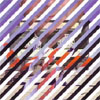 Originally recorded on May 21st, 2002, The War Against Terroris basically one 49-minute song, digitally indexed by six parts, allwhich flow without clear beginnings or endings. While the tune has arather angry feel, from its gritty and hurried pace, distorted dronesand evil synths, it's falls short of making a commentary due to thetiny number of spoken word samples, scarecly repeated throughout thetrack. Back in the old Cabaret Voltaire days, samples were firm andclear, whether it was "Do Right," "Don't Argue," or the brotherstalking on "Low Cool," as choices were made to reinterpret the darkworld sonically. With Kirk recordings as of late, the titles and textare strikingly colorful, but the message in the music itself iscertainly more grey.
Originally recorded on May 21st, 2002, The War Against Terroris basically one 49-minute song, digitally indexed by six parts, allwhich flow without clear beginnings or endings. While the tune has arather angry feel, from its gritty and hurried pace, distorted dronesand evil synths, it's falls short of making a commentary due to thetiny number of spoken word samples, scarecly repeated throughout thetrack. Back in the old Cabaret Voltaire days, samples were firm andclear, whether it was "Do Right," "Don't Argue," or the brotherstalking on "Low Cool," as choices were made to reinterpret the darkworld sonically. With Kirk recordings as of late, the titles and textare strikingly colorful, but the message in the music itself iscertainly more grey.samples:
 Bush Doctrine is Kirk's first release as BioChemical Dread, andis anxiously described as "an incendiary sonic polemic against oilygreed mongering and cultural ignorance," and looking at titles like"False King of the Earth," "King of Baghdad," "Where Is Mr. Sam?,""Zero Democracy Dub," and "I Got Weapons," that would make sense.Musically, this is probably one of the most challenging releases ofKirk's in a long time, threadding non-Western rhythms, wiry radiosamples, voices, wind instruments, and cutting things up into a heftybeat soup with tasty, buzzing noise elements. Kirk flip-flops aroundstyles from intense, high energy tunes to abrasive guitar-ish rockingtunes and slowed down dub numbers, delicately matching hypnotic, classybeats with strong melodies with ample noises. Listening to the tunesand -not- hearing vicious anti-war anti-government samples to match hisapparent sentiments is a let down, however, as I feel that thepackaging (with the song titles and a G. W. Bush cut up on the front)raises the levels of anticipation. I want attitude, I want guts, I wantto watch an accompanying set of visuals with things that will make mystomach turn. Perhaps I'll just have to play this album while watchingsomething awful like Fox News or listening to Democracy Now.
Bush Doctrine is Kirk's first release as BioChemical Dread, andis anxiously described as "an incendiary sonic polemic against oilygreed mongering and cultural ignorance," and looking at titles like"False King of the Earth," "King of Baghdad," "Where Is Mr. Sam?,""Zero Democracy Dub," and "I Got Weapons," that would make sense.Musically, this is probably one of the most challenging releases ofKirk's in a long time, threadding non-Western rhythms, wiry radiosamples, voices, wind instruments, and cutting things up into a heftybeat soup with tasty, buzzing noise elements. Kirk flip-flops aroundstyles from intense, high energy tunes to abrasive guitar-ish rockingtunes and slowed down dub numbers, delicately matching hypnotic, classybeats with strong melodies with ample noises. Listening to the tunesand -not- hearing vicious anti-war anti-government samples to match hisapparent sentiments is a let down, however, as I feel that thepackaging (with the song titles and a G. W. Bush cut up on the front)raises the levels of anticipation. I want attitude, I want guts, I wantto watch an accompanying set of visuals with things that will make mystomach turn. Perhaps I'll just have to play this album while watchingsomething awful like Fox News or listening to Democracy Now.
 Drone rock may not be understood by everyone, and it may induce sleepamong non-believers, but at least it has a sense of melody andmusicianship. Frequency Curtain, a project/experiment by Josh Rosen,John Grzinich and Rick Reed, is drone noise for the noise's sake. Usinganalogue and digital sine wave generators, shortwave radios, and laptopelectronics, the three became an experimental media performance groupthat first began displaying their wares at Intersect 4 in 2001.Improvisational sessions find the members powering up their devices andjust producing sound, tweaking and turning knobs on the fly to marry upthe various sounds produced by the devices. As such, I feel it shouldnot be judged on the quality or style of the sounds, but on the way thedevices interact with each other and the effect the whole performancehas on an audience. There are not many artists with this approach, andwith each that releases a recording of their work, I always feel likeI'm missing a component. This album was compiled from longer sessionsof improvisation, and I feel they probably work better with visualaccompaniment. The sounds that invade the speakers do not seem to bedesigned for listening alone, or at least not for listening enjoyment:they cause the hairs on the back of the neck to rise and fall with eachsquelch and high pitched squeak, and continually irritate the ears evenat low volume. But the different sound generators do blend togethernicely, and produce enough disparity to keep the listen interesting andvaried. The tracks do take quite a while to introduce a variation,however, and by that point many may lose interest. Like manyperformances, it can be summed up by asking Goethe's three questions:"What are they doing?"; "How are they doing it?"; and "Is it worthdoing?" The first two are answered above, and the third is a resounding"Yes." I just feel that it should never be presented in this format, asit loses a great deal of the punch.
Drone rock may not be understood by everyone, and it may induce sleepamong non-believers, but at least it has a sense of melody andmusicianship. Frequency Curtain, a project/experiment by Josh Rosen,John Grzinich and Rick Reed, is drone noise for the noise's sake. Usinganalogue and digital sine wave generators, shortwave radios, and laptopelectronics, the three became an experimental media performance groupthat first began displaying their wares at Intersect 4 in 2001.Improvisational sessions find the members powering up their devices andjust producing sound, tweaking and turning knobs on the fly to marry upthe various sounds produced by the devices. As such, I feel it shouldnot be judged on the quality or style of the sounds, but on the way thedevices interact with each other and the effect the whole performancehas on an audience. There are not many artists with this approach, andwith each that releases a recording of their work, I always feel likeI'm missing a component. This album was compiled from longer sessionsof improvisation, and I feel they probably work better with visualaccompaniment. The sounds that invade the speakers do not seem to bedesigned for listening alone, or at least not for listening enjoyment:they cause the hairs on the back of the neck to rise and fall with eachsquelch and high pitched squeak, and continually irritate the ears evenat low volume. But the different sound generators do blend togethernicely, and produce enough disparity to keep the listen interesting andvaried. The tracks do take quite a while to introduce a variation,however, and by that point many may lose interest. Like manyperformances, it can be summed up by asking Goethe's three questions:"What are they doing?"; "How are they doing it?"; and "Is it worthdoing?" The first two are answered above, and the third is a resounding"Yes." I just feel that it should never be presented in this format, asit loses a great deal of the punch. 



